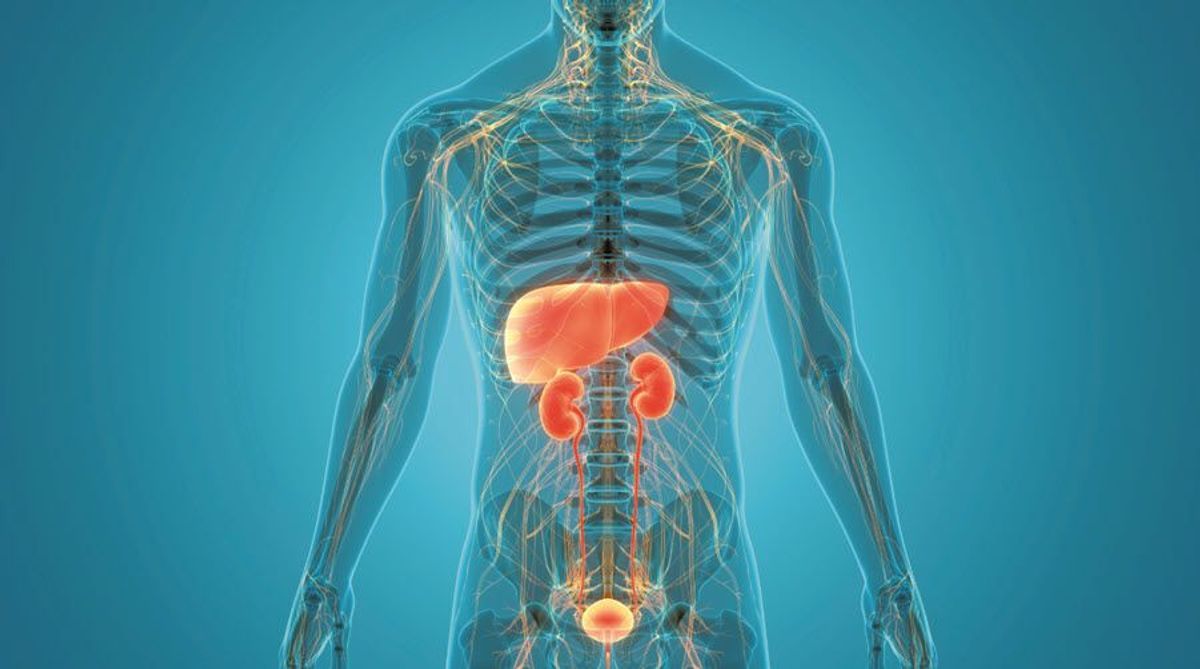Is Gatorade bad for your kidneys? Truth of Sports...
Added by Neal Mathews<p>Many individuals enjoy sipping Gatorade drinks to stay hydrated and energized...

The human body relies on two vital organs for survival — the liver and kidneys. These organs play a crucial role in waste elimination and digestion of food, ensuring the body functions optimally.
While both the two kidneys, and liver share the responsibility of waste removal, they differ in terms of location, functions, size, colour, and more. In this blog post, we'll delve into the fundamental distinctions between these essential organs to enhance your understanding.
The liver also known as the human body’s storehouse is located on the right side of the abdomen area and is the second-largest organ. It performs many crucial functions in the body to sustain life. Moreover, it is the only organ in the human body that holds the ability to regenerate itself.
The liver is dark reddish brown and has a triangular wedge-shaped spongy structure. The size of this organ varies with the individual’s height and weight. Four lobes are present: the larger right lobe and left lobe, and the smaller caudate lobe and quadrate lobe.
It is covered by a layer of fibrous tissue called Glisson’s capsule. Further, this tissue is covered by the peritoneum. This coverage helps protect the liver kidney damage and the kidney function from any physical damage.
The other liver and kidney performs many important functions, such other functions such as:
Here are some important parts of the liver-
Here are some common diseases of the liver disease kidney and liver disease and liver health along with symptoms -
It is the inflammation of the liver caused by several toxic substances and conditions common causes like viral infection, alcohol consumption, different health conditions, food, and some medications.
Symptoms -
In this condition, the vacuoles of liver cancer, fat build up in the liver cells. This can be a result of chronic, of diabetes, obesity or alcohol use.
Symptoms -
Individuals who consume too much alcohol may suffer from this condition.
Symptoms -
The liver and kidneys are one of the crucial organs in the human body responsible for filtering blood and removing toxins from the body. These two bean-shaped organs are located beneath the abdomen and rib cage. Moreover, kidneys are responsible for energy and for balancing the fluids in the body, mainly water and electrolytes.
The kidneys sit on each side of the spine. The right kidney is situated below the kidney function the left one because the other kidney and liver health is on the spine' right side. This bean-shaped organ weighs approximately 115 to 155 grams in females and 125 to 175 grams in males. The kidneys measure about 11 to 14 cm in length, 4 cm thick, and about 6 cm wide.
This organ is protected by ribs, fat, and muscles. Furthermore, a thick layer of perirenal fat protects the kidneys from external damage from disease or injury. The entry and exit point to the nerves, ureter, and vessels is through the renal hilum.
The kidneys perform some important functions like -
Here are some important parts of the kidneys
Here are some common diseases liver cancer of the liver failure kidneys with symptoms -
In this condition, hard deposits of minerals, calcium and salts form inside the liver damage kidneys because itchy skin of several reasons.
Symptoms -
It is a common infection that occurs when certain bacteria reach the urethra and cause infection in the liver and kidney, and urinary tract.
Symptoms -
In this condition, kidneys lose their ability to function properly and it worsens over time.
Symptoms -
We can conclude by saying that the liver and kidneys emerge as integral components within our human anatomy. Their indispensability becomes evident as the proper functioning of largest internal organ within our body relies significantly on these organs. The absence of the liver and kidney, would leave our digestive system incomplete, while the absence of the liver and kidneys would render our excretory system inadequate. These two organs are intricately designed to execute distinct yet vital functions essential for our overall survival.